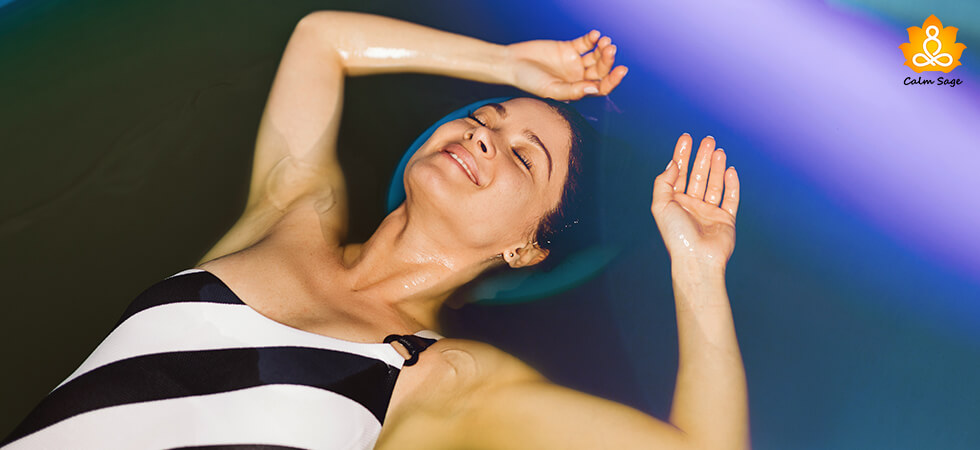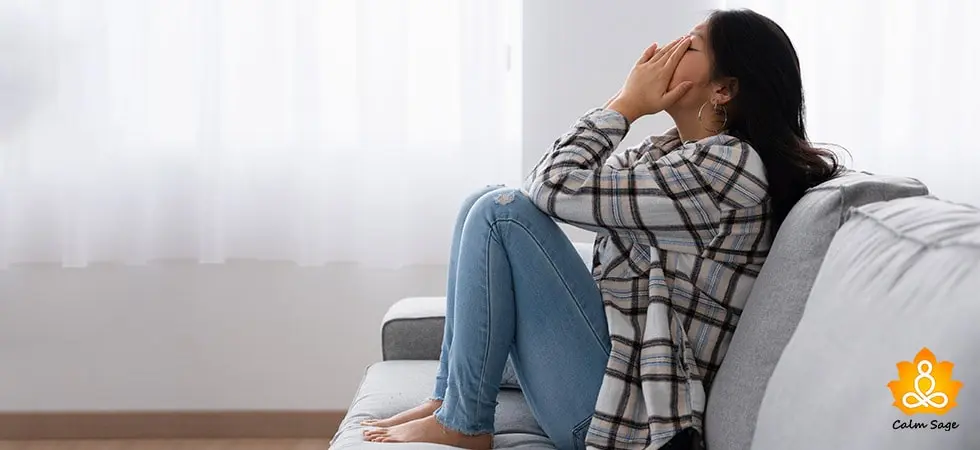Sensory Deprivation Tank: Floating Out From Worries| Your Guide To DIY

Do you know the number one reason behind us feeling stressed, anxious, depressed, or overwhelmed?
The biggest reason is our senses being always available to take the stimulus and further let it impact us. Imagine if you could shut your senses down for a while, allowing nothing to disturb your equilibrium. Sounds surreal?
Well, it is possible to buffer your senses from any stimulus, not allowing them to cause any form of disturbance to you. The technique that I am referring to is known as “Sensory Deprivation” or “Sensory deprivation tank.”
Let us learn more about this way of unloading your sensory overload in detail and learn how you can practice sensory deprivation for yourself (Exciting! Isn’t it?).
What is Sensory Deprivation?
Sensory deprivation involves depriving your senses of stimulation. The idea of sensory deprivation was popularised by the neurologist John C Lilly in the 1950s. He invented a dark, soundproof that allowed people to enjoy sensory isolation by floating in it for as long as they want to!
However, it was in the 1970s and 1980s when its benefits were studied. Although soon after that the concept faded out. But considering the modern times where we are loaded with stimulus and swiping through almost 300 feet of mobile content each day (almost the size of a football field) the trend of sensory deprivation tank is gaining traction
It is like taking a break from external stimulus and giving your senses much-needed rest. You can even think of it as a way to reboot your senses from the sensory overload that they are experiencing in the form of pings on your phone or even the pollution in your surroundings.
Mental Health Benefits of Sensory Deprivation: Why Do I Need It
Sensory deprivation is a way to give yourself some time without any distraction, which makes it a powerful mental health activity for you to try. The list of benefits that it has to offer will help you understand its importance in your life even better. So let us review it.
List of Benefits of Sensory Deprivation
1. Sensory deprivation or floating is a great way to enhance creativity.
2. It is effective in opening doors for new ideas.
3. Your problem-solving skills get better through this practice.
4. Flotation tanks are found to reduce anxiety.
5. Along with anxiety, sensory deprivation tanks can provide benefits in the symptoms of fatigue, irritability, sleep deprivation, and
6. As it somewhat works like a meditation it offers all the other benefits that any other form of meditation has to offer like improved focus, better concentration, and more.
7. Through this activity, you can cherish inner peace, enjoy euphoria, and even connect with your greater self.
8. You may even experience relief in bodily pain and stress-related pain as well.
9. A flotation tank is found to lower your cortisol levels and boost your mood.
A Sensory Deprivation Tank: What is That
A sensory deprivation tank or flotation tank is like a small cubicle wherein you buffer all forms of stimulus that can activate your senses. It is filled with water and a pinch of salt. You float in it on your back and enjoy a sense of relaxation, weightlessness, and silence. With no external stimulation taking your attention away you enjoy inner peace in it.
Experience of Scott McKenzie with Sensory Deprivation Tank
Scott McKenzie, CEO, and owner of the Golden Age Companions went for sensory deprivation three to six times in California and shared his experience. “To have that nothingness and be forced to just decompress… something is revitalizing about it,” he further added, “What it does is it keeps me more focused. You realize, Wow, like my mind had a whole reboot.”
How to Practicing Sensory Deprivation On Your Own?
Well, you don’t necessarily need a flotation tank or visit spas to experience sensory deprivation in your life. You can try sensory deprivation at home as well to manage daily life stress.
Here are the steps for you to follow:
1. Turn your room into a comforting and safe space. Remove all the distractions and triggers from the environment. Create a calming environment.
2. Turn off the light in your room.
3. Lie down in the darkroom with your eyes closed.
4. We would suggest you use an eye mask and noise cancellation headphones to enjoy minimum distractions.
5. Breathe deeply and relax.
6. If at any point you feel uncomfortable stop. Otherwise, continue for a minimum of five minutes.
7. You may continue it for as long as you want. Enjoy it!
I am going to give sensory deprivation a shot this coming weekend. If you are planning to shut down your sensory buffers for a short amount of time do give the steps mentioned above a shot. Don’t forget to share your experience with us in the comments section below.
Time to unload your senses and reload them with peace.
Good luck!
Next Read:
How To Stop PTSD Nightmares & Sleep Peacefully?
Relax Yourself: Here’re Natural Home Remedies For Good Sleep
What Are Sound Baths & How This Ancient Practice Promotes Mental Peace




















